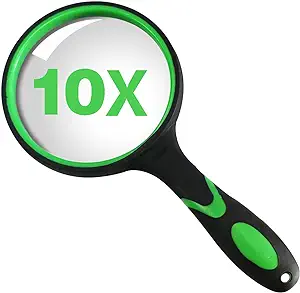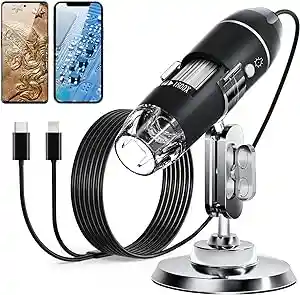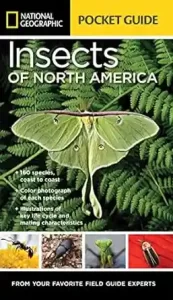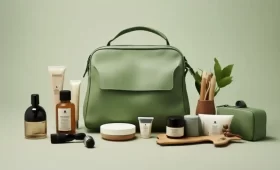
Embarking on journeys infused with the wonders of insect exploration can turn any travel experience into a fascinating adventure. For bug enthusiasts, the world is teeming with intricate, often overlooked life forms waiting to be discovered. Whether you’re trekking through jungles, strolling in meadows, or exploring urban green spaces, the microcosm of insects adds depth and intrigue to your travel narrative.
In the realm of bug enthusiasts on the go, the right gear becomes a passport to this miniature universe. The importance of well-chosen equipment cannot be overstated, as it transforms casual observation into a more immersive and rewarding experience.
From handheld magnifying glasses that unveil the intricacies of tiny creatures to compact cameras that capture the beauty of insect life, the gear you carry enhances your ability to connect with and appreciate the insect world.
This phrase encapsulates the essence of the equipment that enables bug enthusiasts to seamlessly integrate their passion into their travel experiences. Whether you are a seasoned entomologist or a beginner captivated by the world of bugs, having the right gear opens a gateway to a realm where every step unveils a new discovery.
Join us as we delve into the depths of insect travel gear, unlocking the secrets of the miniature wonders that await you on your journeys.
Portable Observation Tools
1. Compact Magnifying Glasses for Insect Observation
Compact magnifying glasses serve as indispensable tools for bug enthusiasts seeking a detailed view of their tiny subjects. These portable devices, often pocket-sized themselves, offer magnification on the go. Opt for magnifying glasses with adjustable lenses to focus on intricate details, such as the delicate patterns on butterfly wings or the structure of a beetle’s exoskeleton.
Pros:
- Lightweight and easily carried in pockets or attached to belts.
- Instant magnification for quick insect identification.
- Ideal for casual observers and beginners.
Cons:
- Limited magnification compared to specialized tools.
- Dependent on ambient lighting for optimal use.
2. Handheld Microscopes for a Closer Look
For enthusiasts craving an even more intimate exploration, handheld microscopes are the perfect companions. These portable devices provide a closer look at tiny creatures, revealing details not visible to the naked eye. Look for models with LED lights for enhanced visibility in various lighting conditions.
Pros:
- Offers higher magnification for intricate observations.
- Portable and easy to use in the field.
- Suitable for both amateurs and serious bug enthusiasts.
Cons:
- Requires a stable surface for optimal use.
- May have a learning curve for those new to microscopy.
3. Pocket-Sized Insect Identification Guides
Carrying a pocket-sized insect identification guide adds an educational dimension to your exploration. These guides, often compact and waterproof, assist in identifying common insects on the spot. Choose guides with clear illustrations, concise information, and a durable format suitable for outdoor use.
Pros:
- Provides quick reference for insect identification in the field.
- Compact size makes it easy to carry during outdoor activities.
- Enhances the educational aspect of insect observation.
Cons:
- Limited to common species; may not cover all insects.
- May require supplemental guides for more comprehensive identification.
Equipping yourself with these portable observation tools ensures that your insect exploration is not only immersive but also convenient. Whether casually observing or delving into scientific inquiry, these tools cater to a range of bug enthusiasts, from beginners to seasoned entomologists.
Entomologist Travel Essentials
Essential Tools for Serious Bug Enthusiasts and Entomologists
For entomologists and serious bug enthusiasts, a well-curated toolkit is essential for in-depth study and observation. This arsenal often includes specialized tools such as forceps, pooters (aspiration devices), and specimen vials. Forceps aid in delicate handling, while pooters allow for gentle suction and collection of smaller insects. Specimen vials are crucial for preserving specimens for further examination.
Benefits:
- Enables precise and careful handling of delicate specimens.
- Facilitates the collection of a diverse range of insects.
- Essential for scientific study and cataloging of insect species.
Considerations:
- Requires knowledge and training for proper use.
- Ethical insect collecting practices should be followed.
Benefits of a Reliable Insect Collecting Kit
A reliable insect collecting kit streamlines the process of gathering specimens for study. These kits often include a variety of tools, from specialized nets for capturing flying insects to containers with adjustable ventilation for temporary housing. Look for kits that prioritize the well-being of collected insects, ensuring minimal harm during the collection process.
Benefits:
- Enhances efficiency in specimen collection during fieldwork.
- Minimizes stress and harm to collected insects.
- Supports ethical and responsible insect study practices.
Considerations:
- Cost may be higher for high-quality, ethically designed kits.
- Proper knowledge of local regulations and ethical guidelines is crucial.
Importance of a Field Notebook for Documenting Insect Observations
A field notebook is a fundamental tool for entomologists and bug enthusiasts alike. This record-keeping device serves as a repository for observations, including details such as habitat, behavior, and any noteworthy interactions. An organized and detailed field notebook contributes to the scientific understanding of insect behavior and ecology.
Benefits:
- Systematic documentation of insect observations in the field.
- Aids in the tracking of seasonal patterns and environmental factors.
- Supports the creation of comprehensive research studies.
Considerations:
- Should be durable and weather-resistant for outdoor use.
- Regular and accurate record-keeping requires discipline and consistency.
Equipping yourself with these entomologist travel essentials ensures that your bug exploration goes beyond casual observation, contributing valuable data to the understanding of insect ecosystems and behaviors. Whether you’re a professional entomologist or an avid bug enthusiast, these tools enhance the precision and depth of your insect studies.
Gear for Butterfly Watching
Butterfly Nets and Cages for Safe and Ethical Catching
Butterfly nets play a pivotal role in the world of butterfly watching, allowing enthusiasts to observe these delicate creatures up close while ensuring their safety. Opt for nets with soft, fine mesh to minimize harm to the butterflies’ wings. Additionally, consider collapsible butterfly cages for temporary observation, providing a controlled environment for closer examination before releasing them back into their natural habitat.
Benefits:
- Enables close-up observation without causing harm to butterflies.
- Collapsible cages facilitate temporary containment for study.
- Supports ethical practices in butterfly watching.
Considerations:
- Gentle handling is crucial to prevent damage to delicate wings.
- Check local regulations and guidelines for ethical butterfly watching.
Butterfly Identification Cards and Guides for Enthusiasts
Enhance your butterfly watching experience with identification cards and guides tailored for enthusiasts. These portable resources feature vivid images, detailed descriptions, and information about habitat and behavior, aiding in quick and accurate identification in the field. Choose guides specific to your region for a more comprehensive understanding of local butterfly species.
Benefits:
- Facilitates on-the-spot identification during butterfly encounters.
- Educates enthusiasts about the diversity of butterfly species.
- Lightweight and easy to carry for quick reference.
Considerations:
- Regular updates ensure accuracy as new species are discovered.
- Digital apps can supplement or replace physical guides for convenience.
Portable Habitats for Observing Caterpillar-to-Butterfly Transformations
Witnessing the magical transformation from caterpillar to butterfly requires the right habitat. Portable pop-up habitats with mesh sides provide a controlled environment for observing this metamorphic process. These habitats often come with access points for feeding and maintenance, allowing enthusiasts to closely follow each stage of the transformation.
Benefits:
- Creates a safe and controlled space for observing the entire life cycle.
- Facilitates educational experiences for enthusiasts of all ages.
- Ideal for school projects, nature camps, or personal observation.
Considerations:
- Regular cleaning and maintenance are essential for the health of the caterpillars.
- Proper ventilation ensures a healthy environment within the habitat.
Equipping yourself with butterfly nets, identification guides, and portable habitats elevates your butterfly watching adventures. The gear not only enhances your observational skills but also contributes to ethical practices, ensuring the well-being of these delicate creatures in their natural habitat. Whether you’re a seasoned butterfly enthusiast or a budding lepidopterist, these tools add depth and understanding to your encounters with these winged wonders.
Insect Photography Accessories
Compact Cameras Suitable for Insect Photography
Capturing the intricate details of insects requires a camera that is both compact and powerful. Consider mirrorless or point-and-shoot cameras known for their portability and advanced features. Look for models with fast autofocus capabilities and a high frames-per-second rate to capture the quick movements of insects. Additionally, choose cameras with a macro mode for close-up shots.
Benefits:
- Portable and easy to carry in outdoor settings.
- Advanced features for capturing fast-moving insects.
- Macro mode enhances the ability to focus on small subjects.
Considerations:
- Ensure the camera has manual settings for greater control.
- Check for weather-resistant features for outdoor photography.
Macro Lenses for Capturing Intricate Insect Details
Macro photography brings out the mesmerizing details of insects, and a dedicated macro lens is indispensable for this task. Opt for lenses with a high magnification ratio and a wide aperture for better depth of field. A focal length between 90mm and 105mm is ideal, allowing for a comfortable working distance while capturing intricate details.
Benefits:
- Unveils the intricate details of small insects and features.
- Provides a shallow depth of field for artistic compositions.
- Enables a comfortable working distance for the photographer.
Considerations:
- Invest in a lens with optical image stabilization for handheld shots.
- Check compatibility with your camera system before purchase.
Tripods and Stabilizers for Steady Shots
Stability is key in insect photography, especially when capturing subjects at high magnifications. A sturdy tripod provides a stable base for your camera, reducing the risk of blurriness in your shots. Consider tripods with adjustable legs and a center column for versatile positioning. For more flexibility, explore stabilizers or monopods for shots on the move.
Benefits:
- Ensures sharp and clear images, especially in low-light conditions.
- Allows for precise framing and composition of shots.
- Reduces fatigue during extended photography sessions.
Considerations:
- Choose a lightweight yet sturdy tripod for easy transport.
- Look for tripods with a quick-release plate for efficient setup.
Insect photography is a meticulous art, and the right accessories can make a significant difference in the quality of your shots. By selecting compact cameras, macro lenses, and stabilizing equipment tailored for insect photography, you elevate your ability to capture the mesmerizing details of these small yet intricate creatures.
Compact Bug Catching Kit
Travel-Friendly Bug-Catching Kit for Beginners
For beginners venturing into the world of insect exploration, a compact bug-catching kit provides an accessible entry point. These kits typically include essentials such as a lightweight and extendable bug-catching net, a small container with breathable ventilation, and a magnifying jar for closer observation. Opt for kits with user-friendly features, like collapsible nets for easy storage and adjustable containers suitable for different insect sizes.
Components:
- Lightweight bug-catching net for easy handling.
- Compact container with breathable features for temporary insect housing.
- Magnifying jar for closer observation without direct contact.
Benefits:
- Introduces beginners to insect observation in a user-friendly manner.
- Portable and easy to carry for spontaneous outdoor adventures.
- Facilitates hands-on learning about different insect species.
Considerations:
- Ensure the net material is gentle on delicate insect wings.
- Check for durable and safe materials in the container and magnifying jar.
Budget-Friendly Options for Insect Enthusiasts
For enthusiasts on a budget, various budget-friendly bug-catching options are available. Look for individual components like affordable nets, jars, and containers that can be assembled to create a personalized bug-catching kit. Consider DIY solutions or repurposed household items, always prioritizing the well-being of the insects.
Components:
- Budget-friendly bug-catching net.
- Repurposed jars or containers for temporary insect housing.
- DIY magnifying options, such as magnifying glasses.
Benefits:
- Cost-effective for individuals exploring insect observation casually.
- Allows enthusiasts to customize their bug-catching gear based on preferences.
- Encourages creativity and resourcefulness in assembling the kit.
Considerations:
- Focus on creating a safe and comfortable environment for insects.
- Regularly inspect and upgrade components for durability.
Importance of Ethical Insect Handling
Regardless of the bug-catching kit used, ethical handling practices are paramount. Emphasize the importance of treating insects with respect and care. Teach beginners and enthusiasts alike to minimize stress on insects during capture, handling, and release. Encourage the observation of insects in their natural habitat whenever possible to avoid disrupting their ecosystems.
Guidelines:
- Minimize handling to reduce stress on the insects.
- Release insects back into their natural habitat promptly.
- Educate on the ethical considerations of insect observation.
Benefits:
- Fosters a sense of responsibility and empathy toward insects.
- Promotes ethical and sustainable insect exploration practices.
- Cultivates a positive and respectful attitude toward the natural world.
Considerations:
- Provide educational resources on local insect species and ecosystems.
- Encourage a leave-no-trace approach in natural environments.
A compact bug-catching kit serves as an engaging and educational tool for beginners and budget-conscious insect enthusiasts. By combining accessibility with ethical considerations, these kits promote responsible insect observation, ensuring that the joy of discovery is accompanied by a genuine appreciation for the delicate ecosystems these insects inhabit.
Outdoor Entomology Gear
Lightweight Insect Specimen Containers
Lightweight insect specimen containers are indispensable for entomologists conducting fieldwork. Opt for containers made from durable yet lightweight materials, such as plastic or acrylic. Look for options with breathable lids to ensure the well-being of captured insects. These containers are essential for safely transporting and studying specimens without causing harm.
Features:
- Durable yet lightweight construction for easy portability.
- Breathable lids or mesh sides to provide proper ventilation.
- Various sizes to accommodate different insect species.
Benefits:
- Facilitates safe specimen transport without compromising insect health.
- Ideal for entomologists conducting extensive field studies.
- Easy to carry in a backpack or field bag.
Considerations:
- Check for secure closures to prevent escapes during transport.
- Opt for clear containers for easy observation without disturbance.
Portable Insect Aspirators for Gentle Collecting
Portable insect aspirators are valuable tools for gentle insect collection, particularly for delicate or smaller species. These devices use suction to capture insects without causing harm. Choose aspirators with adjustable suction levels to cater to various sizes of insects. The portability of these aspirators makes them suitable for precise fieldwork.
Features:
- Adjustable suction levels for gentle collection.
- Portable and handheld for ease of use in the field.
- Easy-to-clean design for maintaining hygiene.
Benefits:
- Minimizes the risk of injury or stress to collected insects.
- Ideal for capturing small or fragile species without physical contact.
- Enhances precision in entomological studies.
Considerations:
- Regularly clean and maintain aspirators for optimal performance.
- Provide proper training on the ethical use of aspirators.
UV Lights for Nighttime Insect Observation
Nighttime insect observation is a unique aspect of entomology, and UV lights (blacklights) play a crucial role in attracting nocturnal insects. Portable UV lights are available in various sizes and designs. Consider handheld or mountable options for versatility. These lights are not only useful for observation but also for attracting insects to designated collection areas.
Features:
- Handheld or mountable designs for flexibility.
- Various wavelengths to attract different types of insects.
- Battery-powered or rechargeable for outdoor use.
Benefits:
- Facilitates nighttime insect observation without disturbing their natural behavior.
- Enhances the efficiency of insect collection during specific times.
- Provides a hands-free option for continuous observation.
Considerations:
- Use UV lights responsibly to avoid disrupting natural ecosystems.
- Be mindful of local regulations regarding the use of UV lights.
Outdoor entomology gear, including lightweight specimen containers, portable insect aspirators, and UV lights, equips entomologists for comprehensive field studies. These tools not only aid in responsible insect collection but also contribute to a deeper understanding of insect behavior, diversity, and ecology in their natural habitats.
Conclusion
In the enthralling realm of insect exploration, having the right gear transforms a simple outing into a captivating adventure. The carefully curated tools discussed, from compact magnifying glasses to UV lights and insect aspirators, are not just instruments; they are gateways to a world teeming with miniature wonders. The focus keyword, “Insect travel gear,” encapsulates the essence of this equipment, emphasizing its pivotal role in enhancing the insect enthusiast’s journey.
Equip yourself with portable observation tools for immediate insect encounters, entomologist travel essentials for in-depth studies, and butterfly watching gear for a closer look at the delicate winged creatures. Capture the intricate details with insect photography accessories and delve into ethical insect observation with a compact bug-catching kit. For the nocturnal explorer, outdoor entomology gear, including UV lights, opens the door to a mysterious world of nighttime insect activity.
In embracing the recommended gear, readers are not just acquiring tools; they are embarking on insect-filled adventures where each step unfolds a new discovery. So, whether you’re a seasoned entomologist or a budding enthusiast, let “Insect travel gear” be your companion in exploring the vibrant and diverse universe of insects. Unleash your curiosity, contribute to the understanding of these incredible creatures, and let the recommended gear be the compass guiding you through the mesmerizing landscapes of insect exploration. Your journey awaits—immerse yourself in the beauty of the small, the intricate, and the extraordinary.






